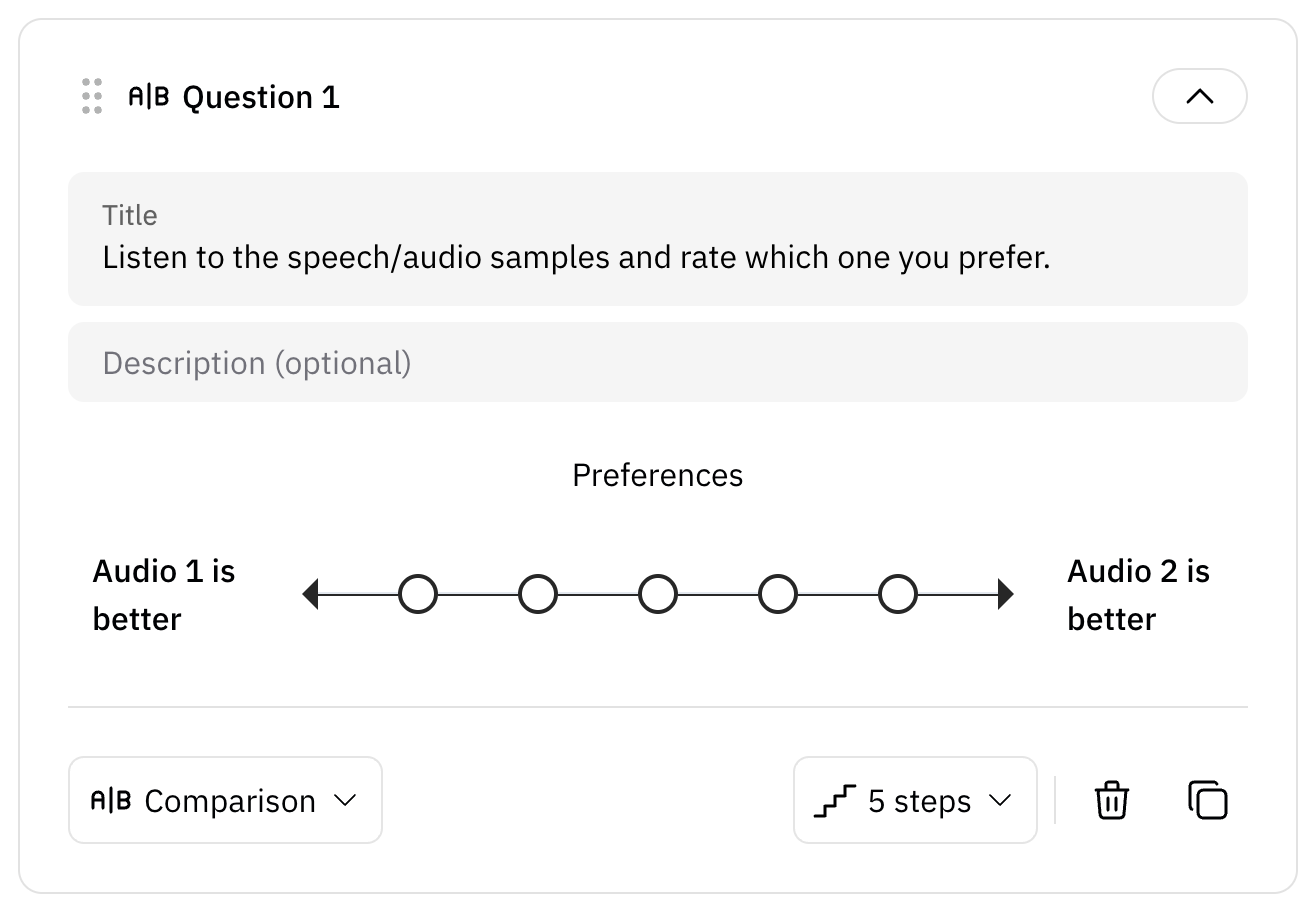import podonos
from podonos import *
import myTTS
text = "Hello, how is your day going?"
language = 'en-gb'
audio1_path = 'model1_speech.wav'
audio2_path = 'model2_speech.mp3'
speech = myTTS(text=text, lang=language, slow=False)
speech.save(audio2_path)
client = podonos.init()
etor = client.create_evaluator(
name="Speech AI Preferences Test",
desc="Preference test between speech synthesis models",
type="PREF",
lan=language,
num_eval=10
)
etor.add_files(
file0=File(path=audio1_path, model_tag='myTTS v1', tags=["model1", "epoch5"]),
file1=File(path=audio2_path, model_tag='myTTS v2', tags=["model2", "epoch5"])
)
etor.close()


